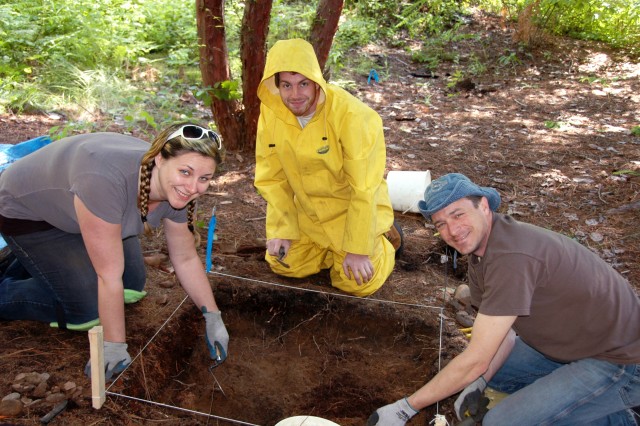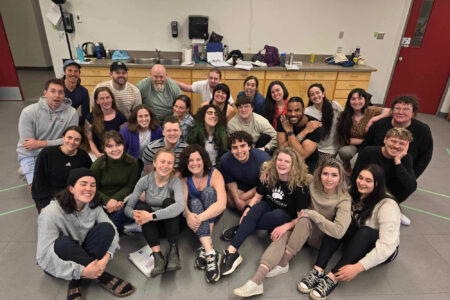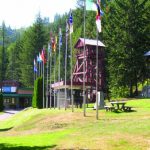Selkirk students dig into their studies
Students from Selkirk College’s School of University Arts & Sciences dug into their studies through an archaeological field school at Zuckerberg Island in Castlegar from June 7-11.
During the week, archaeological sites were set up in and around former kekulis (remains of underground houses built by First Nations people) and yards on the Island. Student groups were put in charge of one by one metre squares of land and were required to dig in 10 centimetre increments, recording what they did and did not find as they went along.
Student groups were able to uncover parts of tools and lithic scatter (waste flakes that are chipped off stone as a result of making artifacts). Lithic scatters are a great indicator of human activities, as it often means that someone was actually making tools at that location. The most common types of material associated with the artifacts found were (in order of quantity), Kootenay argillaceous chert (locally known as Kootenay argillite), chert and basalt.
“It was so exciting to actually find something!” said Barb Jankola, student and faculty member at Selkirk College. “I have always wanted to learn about archaeology and I can’t believe that I went through a real dig right here in Castlegar!”
The artifacts will be analyzed and eventually placed in local museums. But the main emphasis of the course was not so much about finding artifacts as it was about going through the rules and regulations of an archaeological dig.
“This is an introductory course and the main idea is to teach students about the process,” said Dr. Douglas Hudson, Selkirk College Anthropology instructor and faculty member of the University of the Fraser Valley. “I constantly encouraged everyone to go through their processes carefully and methodically. The fact that we found some artifacts was an added bonus!”
The field school is part of the Anthropology 210 course and is the first ever to be offered through the college. Prior to the two-week field school, students enrolled in a four week online component to learn about topics that included the basic concepts and terms and short history of the discipline; field concepts and methods; and survey, excavation, stratigraphy and other recording methods. Now that the field school component is over, students are required to analyze their findings and write detailed reports about their experiences.
The college hopes to offer the course on an annual basis. If you are interested in finding out more about Anthropology and/or courses and programs available through the School of University Arts and Sciences, visit www.selkirk.ca/programs/uas or call 1.888.953.1133, ext. 205.























